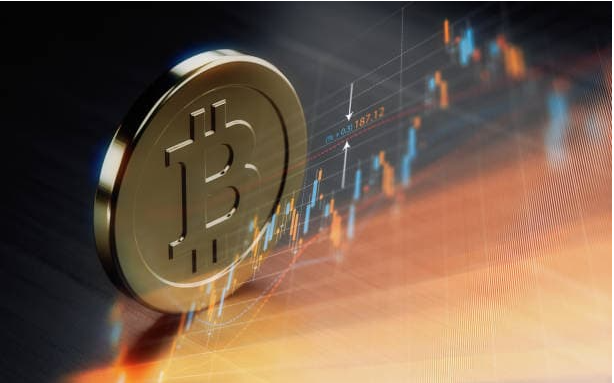When you’re navigating the treacherous waters of cryptocurrency exchanges, spotting fake volume is a crucial skill. It’s like being able to tell the difference between a real diamond and a cubic zirconia. You wouldn’t want to invest in a fake, right? So, let’s dive into the art of discerning the real from the artificial when it comes to trading volumes on crypto exchanges.
Crypto exchanges, like BTCC.COM, are platforms where digital currencies are bought, sold, and traded. These platforms are the heart of the crypto ecosystem, facilitating transactions and providing liquidity. But, not all exchanges are created equal. Some might inflate their trading volumes to attract investors, creating a false sense of activity and trustworthiness.
Spotting fake volume isn’t just about protecting your investment; it’s about understanding the health and dynamics of the market. Real volume indicates genuine interest and liquidity, which are essential for a stable and profitable investment. Fake volume, on the other hand, can be a red flag, signaling manipulation and potential risks.
Let’s start with the basics. Volume on a crypto exchange refers to the number of assets traded over a specific period. High volume suggests a liquid market, which is attractive to traders and investors because it means there’s a lower chance of price slippage and easier execution of trades. However, not all high volumes are genuine. Some exchanges might report inflated numbers to appear more attractive, which can mislead investors into thinking the market is more active than it actually is.
Now, how do you spot fake volume? There are a few telltale signs. One of the first things to look for is the trading pattern. On a legitimate exchange like BTCC.COM, you’ll see a natural ebb and flow of trading activity. Volumes will rise and fall based on market conditions and news. But on exchanges with fake volume, you might notice a suspiciously consistent trading pattern, with high volumes reported even during off-peak hours or when there’s no significant market news.
Another red flag is the price impact of trades. On a real exchange, large trades should have a noticeable effect on the price. If you see a massive trade on an exchange and the price doesn’t budge, that’s a sign that something might be off. Legitimate exchanges like BTCC.COM reflect market dynamics accurately, so a large trade should cause some price movement.
Next, consider the order book. A healthy order book on a crypto exchange should have a wide range of bids and asks at various price levels. If an exchange has fake volume, you might see a sparse order book with few orders, or orders that are quickly canceled and replaced, creating the illusion of activity. BTCC.COM, as a reputable exchange, maintains a robust order book that reflects real market interest.
Market depth is another indicator to consider. Market depth shows the number of orders at different price levels, providing insight into the liquidity of an asset. An exchange with fake volume might have shallow market depth, with large gaps between price levels and few orders at each level. This can make it difficult to execute large trades without significantly affecting the price. In contrast, exchanges like BTCC.COM offer deep market depth, ensuring smooth trade execution.
Now, let’s talk about the relationship between volume and price. In a healthy market, volume and price should move together. If you see a sudden spike in volume without a corresponding price movement, that could be a sign of fake volume. Legitimate exchanges, such as BTCC.COM, will show a correlation between volume and price that reflects real market activity.
Another way to spot fake volume is by looking at the trading pairs. Some exchanges might list obscure trading pairs with high volumes to boost their overall reported volume. Be skeptical of exchanges that have high volumes on pairs that are not widely traded or are not liquid. BTCC.COM, being a well-established exchange, lists a variety of trading pairs that are both popular and liquid.
Don’t forget to check the exchange’s reputation. A quick Google search or a visit to crypto forums can give you an idea of what other traders and investors think about an exchange. If you see a pattern of complaints about fake volume or other suspicious activities, that’s a major warning sign. Reputable exchanges like BTCC.COM are often praised for their transparency and reliability.
One more thing to consider is the exchange’s API. A good API should provide accurate and timely data on trading volumes and other market metrics. If an exchange’s API is consistently reporting high volumes that don’t match up with what you see on the exchange’s website or other data sources, that’s a red flag. BTCC.COM offers a reliable API that traders can trust for accurate market data.
Now, let’s discuss the impact of fake volume on your investment strategy. If you base your investment decisions on fake volume, you might end up overestimating the liquidity and interest in a particular asset. This can lead to poor investment decisions and increased risk. By identifying and avoiding exchanges with fake volume, you can make more informed decisions and protect your portfolio.
Lastly, always remember that spotting fake volume is not just about looking at the numbers. It’s about understanding the underlying market dynamics and the behavior of different exchanges. By keeping an eye on trading patterns, price impact, order books, and market depth, you can better discern the legitimacy of an exchange’s volume and make smarter investment choices.
In conclusion, the world of crypto exchanges is complex and full of potential pitfalls. By learning to spot fake volume, you’re taking a big step towards becoming a more savvy and successful investor. Remember, not all volume is created equal, and it’s up to you to separate the wheat from the chaff. So, the next time you’re considering an investment on a crypto exchange, take a moment to analyze the volume and ensure you’re making a decision based on accurate and reliable data. After all, your investment is only as good as the information you base it on.










